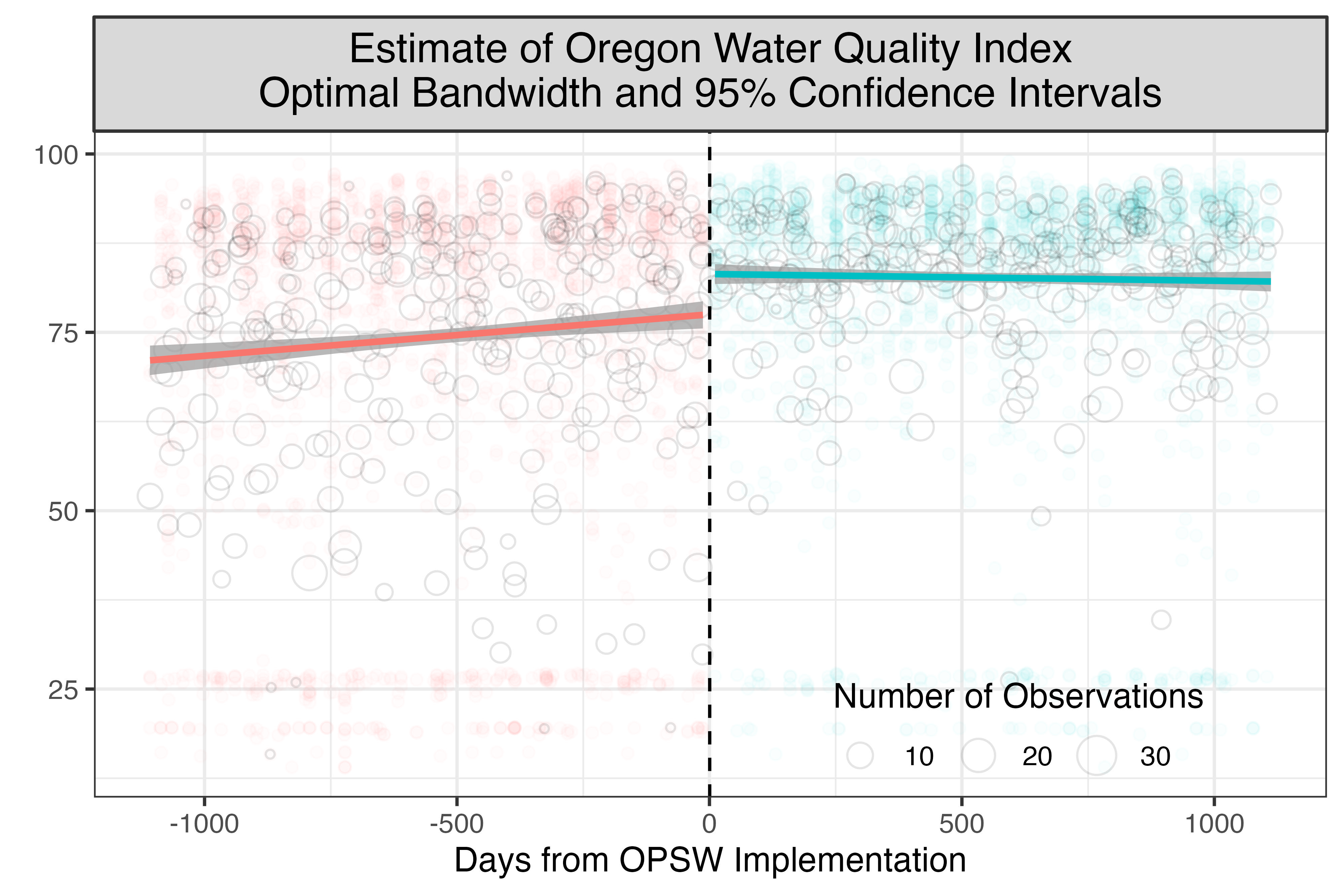Abstract
Cross-boundary collaboration is used widely in environmental management, yet little research examines the connections between collaborative actions and collaborative outcomes. To address this gap, this article evaluates the impact of the Oregon Plan for Salmon and Watersheds (OPSW), a policy that authorizes and encourages the use collaboration to improve environmental outcomes. Specifically, the study empirically assesses whether state legislation authorizing collaborative actions (i.e., watershed restoration projects) improves environmental outcomes and whether characteristics of collaborative actions (convener, leader, and goal multiplicity) lead to different environmental outcomes. We explore these research questions by combining multiple data sources spanning the period of 1980-2021 in the state of Oregon. Employing a regression discontinuity in time (RDiT) design, we find that water quality improved by about 5 percent after the passage of the OPSW. Furthermore, our longitudinal analyses show that projects convened by collaborative governance regimes (i.e., Watershed Council) do not always outperform projects convened by ad hoc collaborations, while local government leaders are more effective than civic group or state government leaders. Also, leaders from the state government become the most effective as the number of goals per project increases. These findings indicate the importance of system context and collaborative actions in environmental outcomes of cross-boundary collaboration.
Figure 5: RDiT estimate of the legislation effect on water quality
